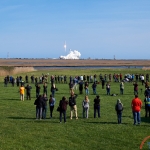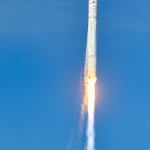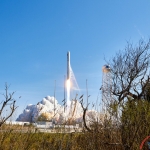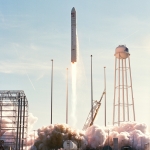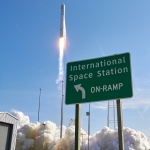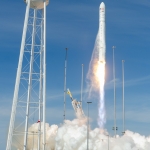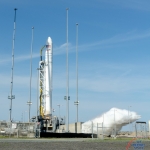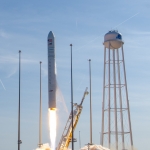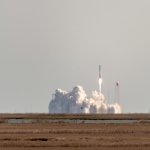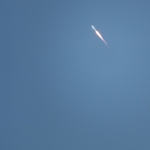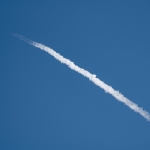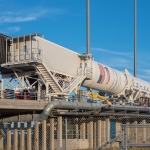Northrop Grumman Launches Antares, Completes CRS-1 Contract with NG-11 Liftoff
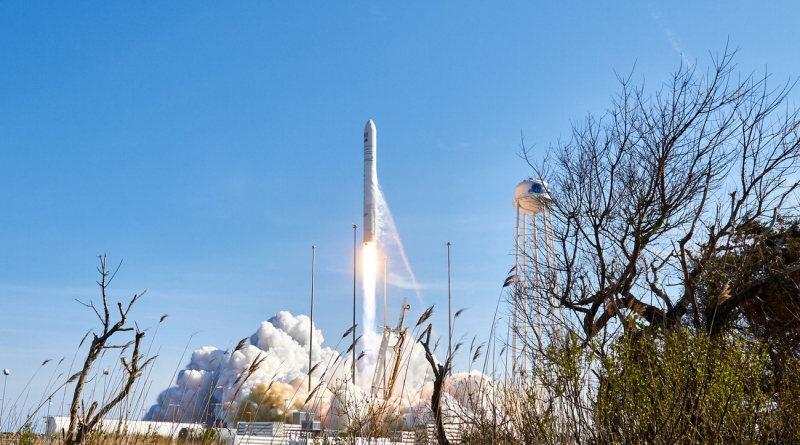
WALLOPS ISLAND, VA - Wednesday, April 17, 2019 at 4:46 pm Eastern time, after a 5 hour countdown that was nearly flawless Antares lifted off and carried the S. S. Roger Chaffee spacecraft to a successful orbit. The name was selected in honor of the three astronauts lost in the Apollo 1 accident.
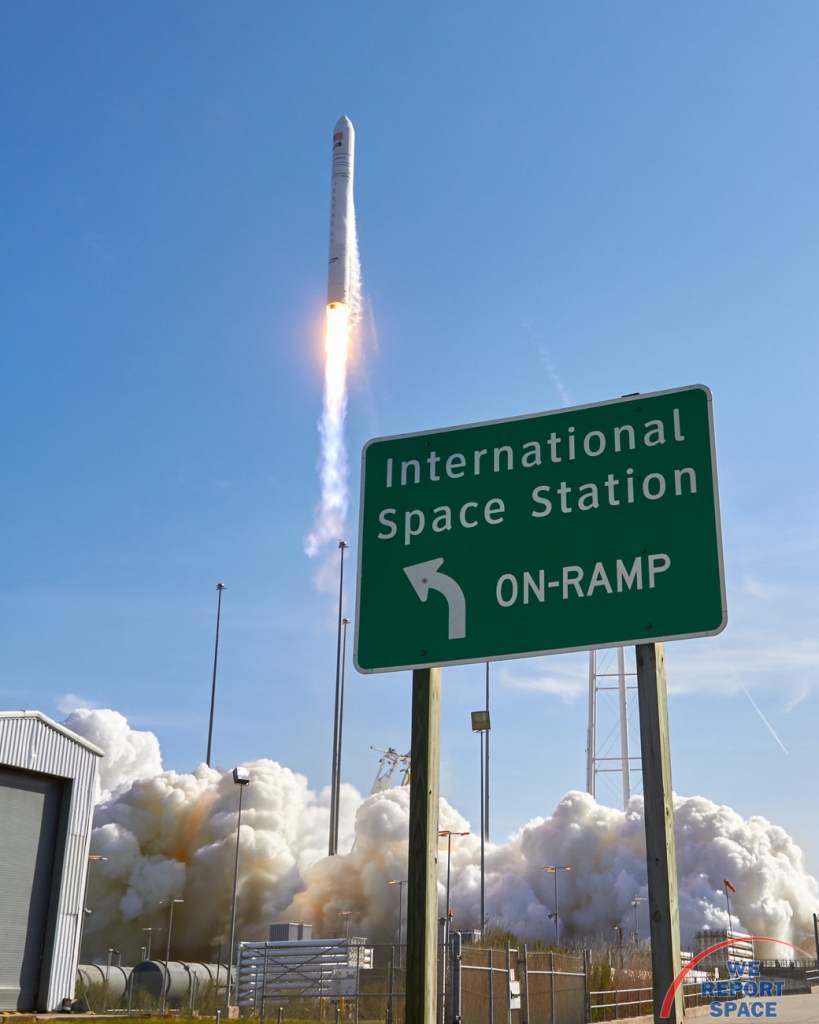
The Cygnus spacecraft weighed a total of 16,000 pounds and contained a weight of 7,600 pounds of new equipment, food and supplies, and experiments. This sat atop a two stage Antares launch vehicle for a total launch weight of approximately 680,000 pounds.
During the countdown at T - 4:00 minutes when the spectators heard RANGE CLEAR there was applause and cheering in appreciation that the Mid Atlantic Regional Spaceport (MARS) had done an excellent job of preparing the community, mariners and general aviation pilots for this event.
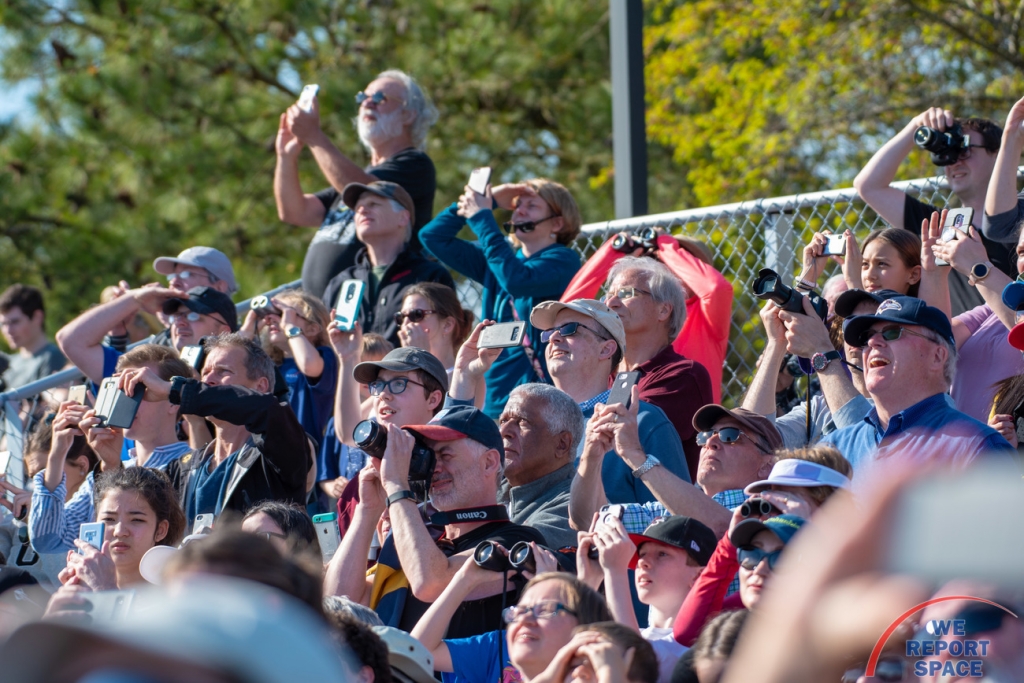
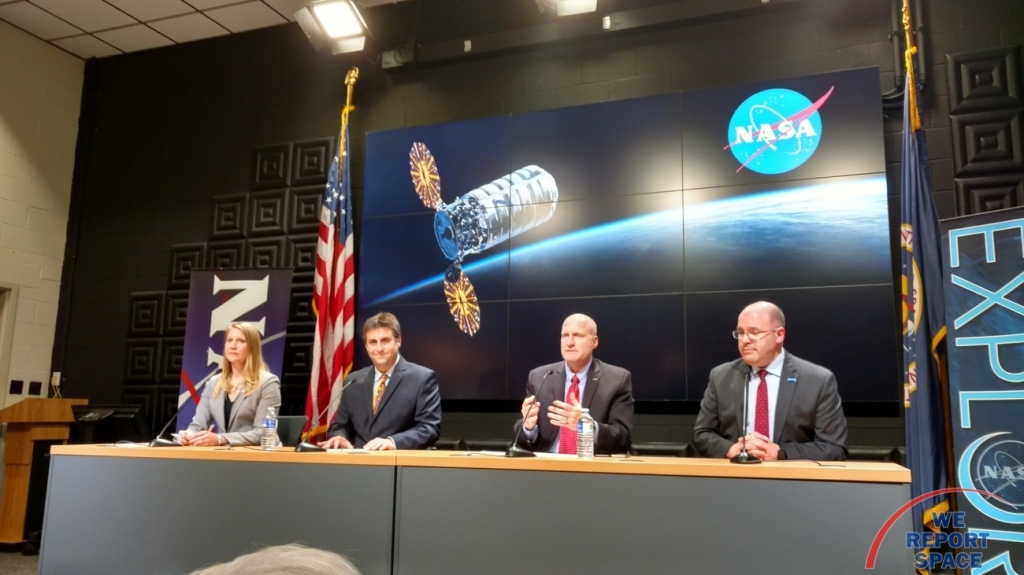 NASA and Northrop Grumman representatives (Joel Montalbano, Kurt Eberly and Frank DeMauro) summarize the NG-11 launch at the post-launch conference. Photo credit: Will Smoot / We Report Space
NASA and Northrop Grumman representatives (Joel Montalbano, Kurt Eberly and Frank DeMauro) summarize the NG-11 launch at the post-launch conference. Photo credit: Will Smoot / We Report Space
Kurt Eberly, Antares Vice President at Northrop Grumman, observed that the late-load went very well and he was quite pleased. Future versions of Antares are expected to be modified to increase strength to allow higher throttle levels at Max-Q and these modifications are also expected to reduce vehicle weight by 700 to 800 Kg or 1,550 to 1,750 pounds. This, along with better throttle management is expected to make it possible to loft greater payloads which will enable Antares to support Moon missions and Gateway. He also related that after 265 seconds the 60 Slim Sats were launched. At the time of the press conference resulted were also being returned and data from all unites were expected to be doing in by 11 pm.
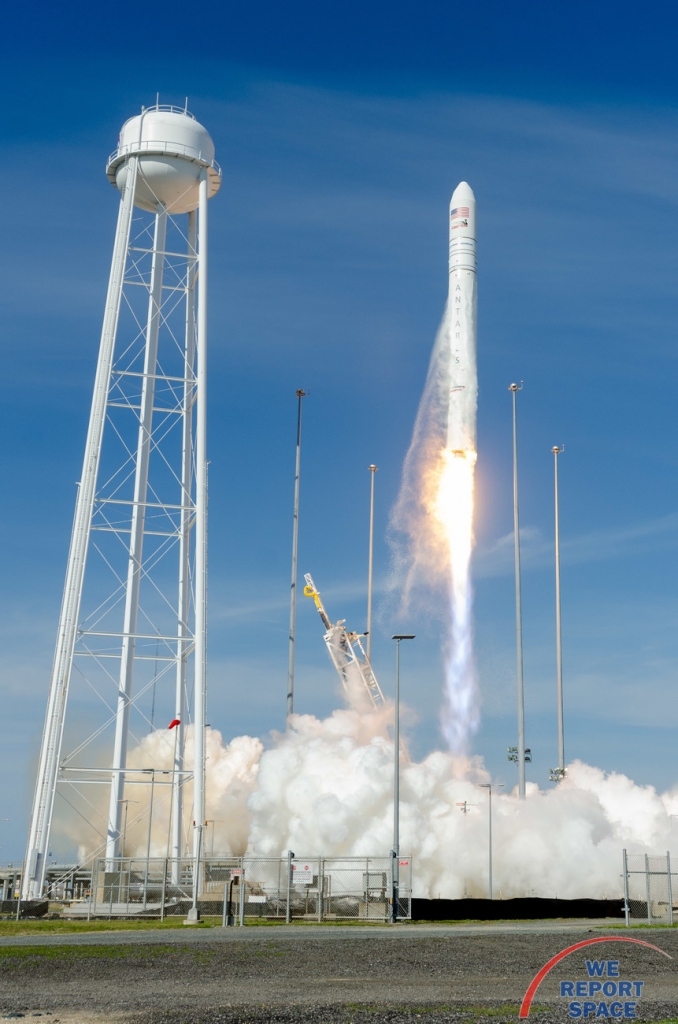
Cygnus has undergone several changes since the first launch in 2013. It now carries 3,500 Kg or 7,700 pounds of cargo. The fairing has been modified so that after initial loading and transport to the launch pad the rocket can be returned to horizontal and the cargo space can be accessed again. For NG-11 there were 6 additional cargo bags added, including the first live animals in a Cygnus payload. This process went extremely well says Frank DeMauro, Vice President and General Manager, Space Systems Northrop Grumman. The Late Load process also went quicker than planned and will contribute to better late-load cargo survival.
The evolution of the Cygnus spacecraft has included an increase of payload from 2,000 Kg to 3,500 Kg (4,400 to 7,700 pounds) More telemetry has been added to assist in monitoring the cargo, and live or delicate packages. The fairing was modified to allow access to the loading hatch after assembly to the launch vehicle (Late-Load) and the service module was modified with automated systems to initiate and control targeted altitude burns to autonomously move the space craft to the altitude required to meet the ISS.
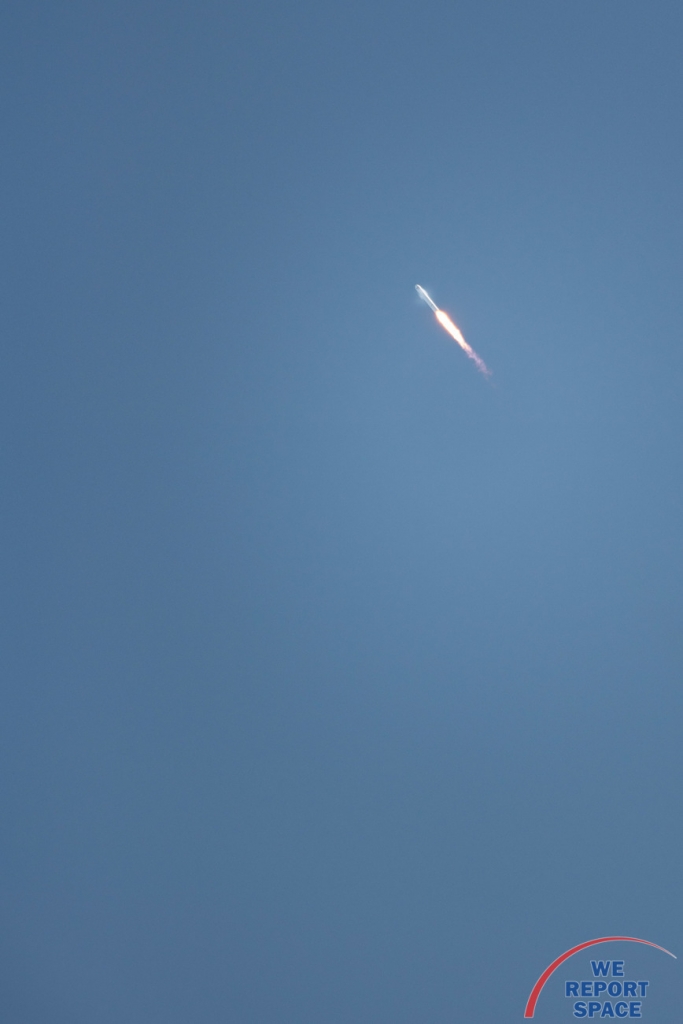
Many of the planned features of the CRS-2 series of launches have been tested in recent Cygnus launches. Ideas which will help support the 2024 moon mission or the Gateway mission are already in place and being utilized. Antares and Cygnus are absolutely open to involvement by more students and schools. Antares is expected to be a viable launch tool for a long time and Northrop Grumman is not making immediate plans to replace the system.
Congratulations to all of the MARS, NASA Wallops, Antares and Cygnus Team. For more information about NASA and the International Space Station, please visit www.nasa.gov/station
Photos

Stunning, full color photo book covering every east coast launch spanning 2014-2015, including the first-ever powered landing of a SpaceX Falcon 9 rocket.
More Info